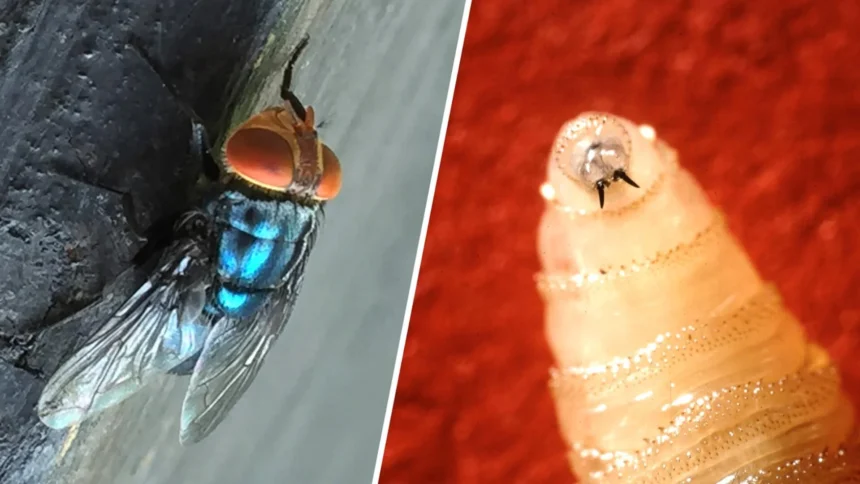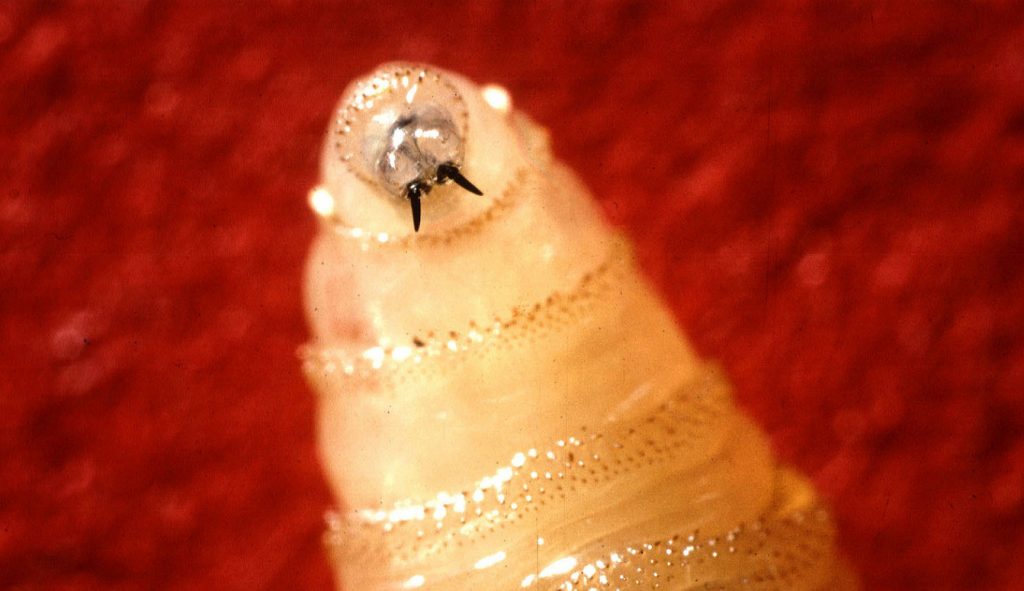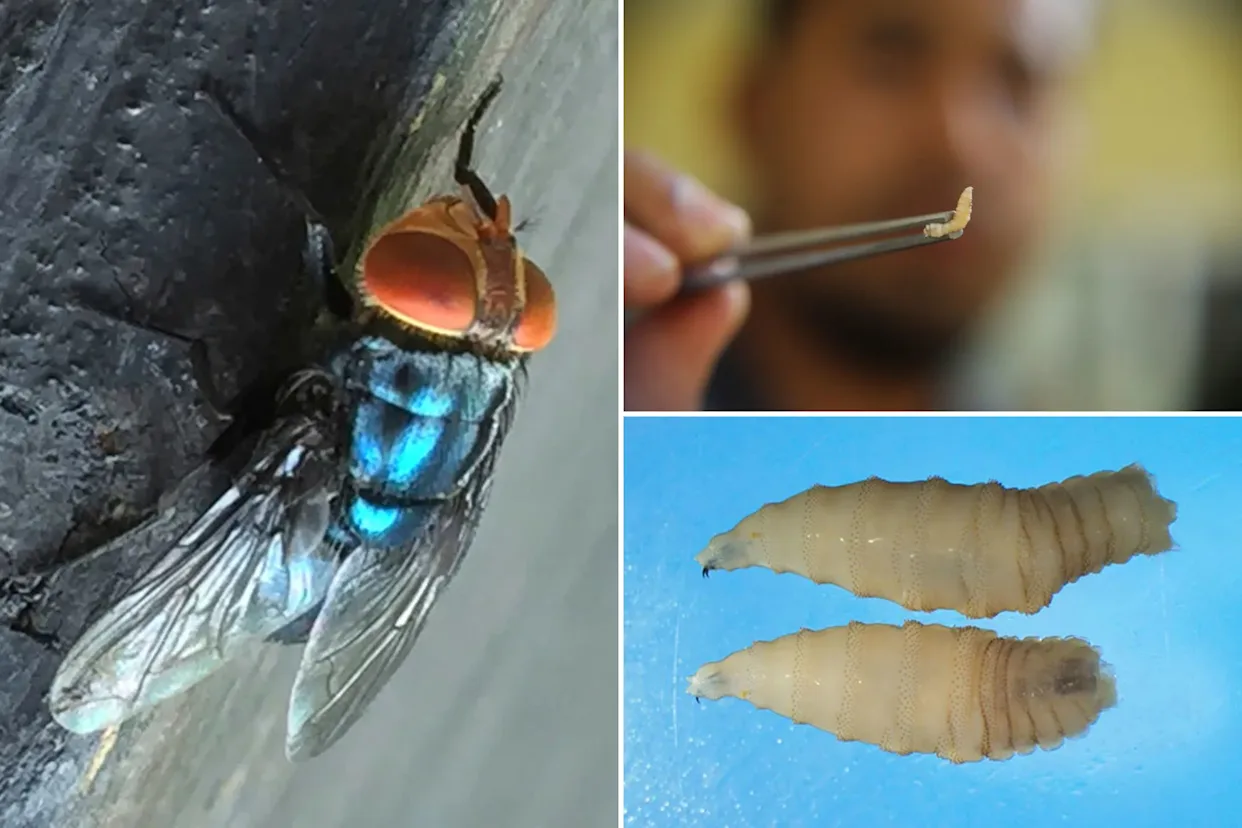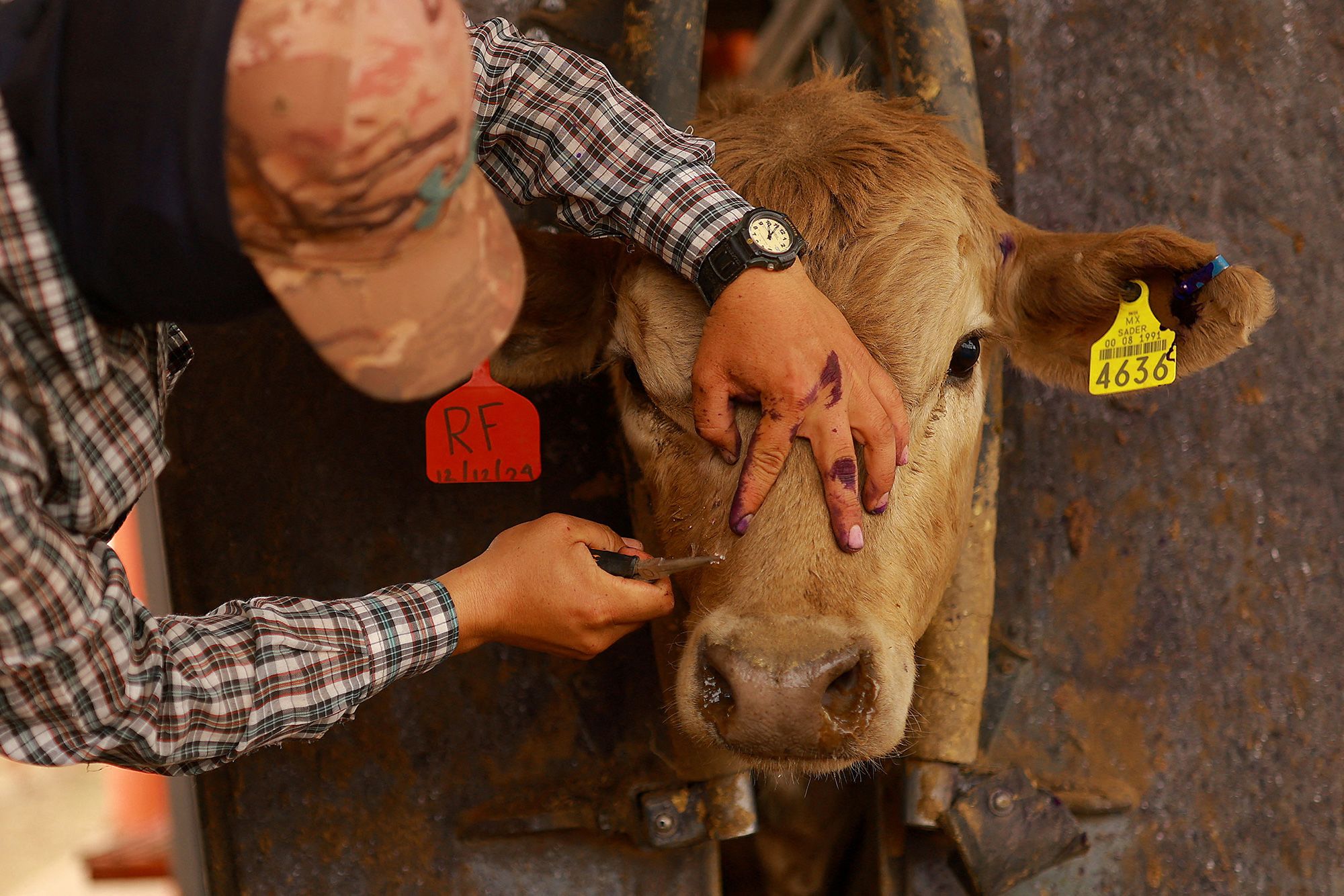MARYLAND – The United States has reported its first human case of travel-related New World screwworm, a parasite that eats living tissue and poses risks to both people and animals. The U.S. Department of Health and Human Services (HHS) announced the case on 24 August 2025.
It involves a Maryland resident who picked up the parasite during a trip to El Salvador, though some early reports mentioned Guatemala as the likely source. HHS has not addressed these conflicting details.
The Centers for Disease Control and Prevention (CDC) confirmed the case on 4 August, marking another step in the ongoing challenge of keeping this dangerous pest out of the country. As the United States monitors the situation, Thailand and other countries are stepping up their own defences to stop screwworm from spreading.
Understanding the Screwworm
The New World screwworm, known scientifically as Cochliomyia hominivorax, is a type of fly whose larvae eat the living flesh of warm-blooded animals, including livestock, wildlife and, on rare occasions, humans. Unlike blowflies that feed on wounds after the animal dies, screwworm larvae burrow into healthy tissue with their pointed mouths.
A single female fly can lay up to 300 eggs in open wounds or body openings. Once they hatch, the larvae grow quickly and can be fatal within weeks if not treated. In people, an infection causes severe pain, swelling, fever and foul-smelling wounds where the larvae are sometimes visible. Secondary bacterial infections often follow, making recovery more difficult.
The CDC describes these cases, known as myiasis, as very painful and warns that untreated cases can be deadly, even though human infections are rare.
Screwworm is especially harmful to livestock, causing lasting wounds, distress and sometimes death. Outbreaks threaten whole herds. The U.S. Department of Agriculture (USDA) warns that if screwworm were to return to Texas, the country’s largest cattle producer, losses could reach $1.8 billion from animal deaths, extra labour and higher medical costs.
Because adult flies can travel long distances, they are hard to control and present a serious risk to farmers and public health.
How the Parasite Entered the United States
The case in Maryland has been linked to an active screwworm outbreak in Central America that started in late 2023. The patient, who has since recovered, is believed to have been infected in El Salvador, where screwworm is common.
The CDC confirmed the diagnosis using images sent online, and said that the wider risk to the U.S. remains very low. So far this year, no animal cases have been reported in the country. However, reports from Northern Mexico showed the parasite reaching within 370 miles of the Texas border, raising fresh worries.
The U.S. has been on alert since screwworm moved north after a biological barrier in the Darien Gap failed. In the 1960s, the U.S. used a sterile insect technique, releasing sterilized male flies that could not breed, to wipe out screwworm domestically. Still, the parasite remains in parts of South America and the Caribbean.
Rising cases in Mexico led the U.S. to stop importing livestock from affected areas in November 2024. The Maryland case highlights the danger posed by travel-related infections, especially for those with open wounds or people staying in rural areas where such parasites are more common.
Threats Linked to Screwworm Infestations
Newborn calves are very at risk from screwworm, especially before their wounds heal after birth. In livestock, infestations bring severe tissue loss, stress, rapid weight drop and high risk of death without fast treatment.
Human infections, although rare, can destroy muscle and skin and are extremely painful. The Maryland case was treated quickly, and steps were taken to stop further spread, but the chance of outbreaks remains if the parasite gets established.
An outbreak could also threaten the $100 billion U.S. cattle industry, driving up beef prices and disturbing supply chains. In June 2025, USDA Secretary Brooke Rollins announced plans for a new sterile fly facility in Edinburg, Texas, to help prevent this.
The plant is set to produce around 300 million sterile flies every week, but it will take several years to build, meaning extra precautions such as border checks and animal monitoring are more important than ever.
The U.S. case is a timely signal for health and farming groups worldwide to stay alert. The risk to the American public is low right now, but screwworm could cause huge economic and environmental damage if not checked.
The USDA’s plan focuses on producing sterile flies, tighter border screening and using sniffer dogs at key crossings. In addition, Mexico’s $51 million sterile fly facility and Panama’s plant, which produces 100 million flies per week, are key in the fight to push screwworm back towards South America.
With the Maryland patient fully recovered and no animal cases in the U.S. at present, there is some relief. Still, cattle farmers across the country are paying close attention to any signs of trouble. Travellers heading to Central America are also being reminded to protect themselves and report any unusual symptoms after returning home.
Steps Thailand is Taking
Although Thailand has seen no screwworm cases so far, the country has put new measures in place, having watched the spread in the Americas. Thailand’s Department of Livestock Development now runs stricter checks at ports and airports, especially for animal imports and people arriving from regions with known outbreaks.
The country is boosting surveillance and helping vets learn to spot screwworm larvae, while teaching farmers about proper wound care in animals. Given Thailand’s warm climate, such steps are needed to keep screwworm at bay.
Thailand is also working with other ASEAN countries to share outbreak updates and create shared protection plans. The government has invested in research on the sterile insect technique, following the U.S. approach. It is running public awareness campaigns that encourage travellers who spot unusual sores after a trip to see a doctor straight away.

















